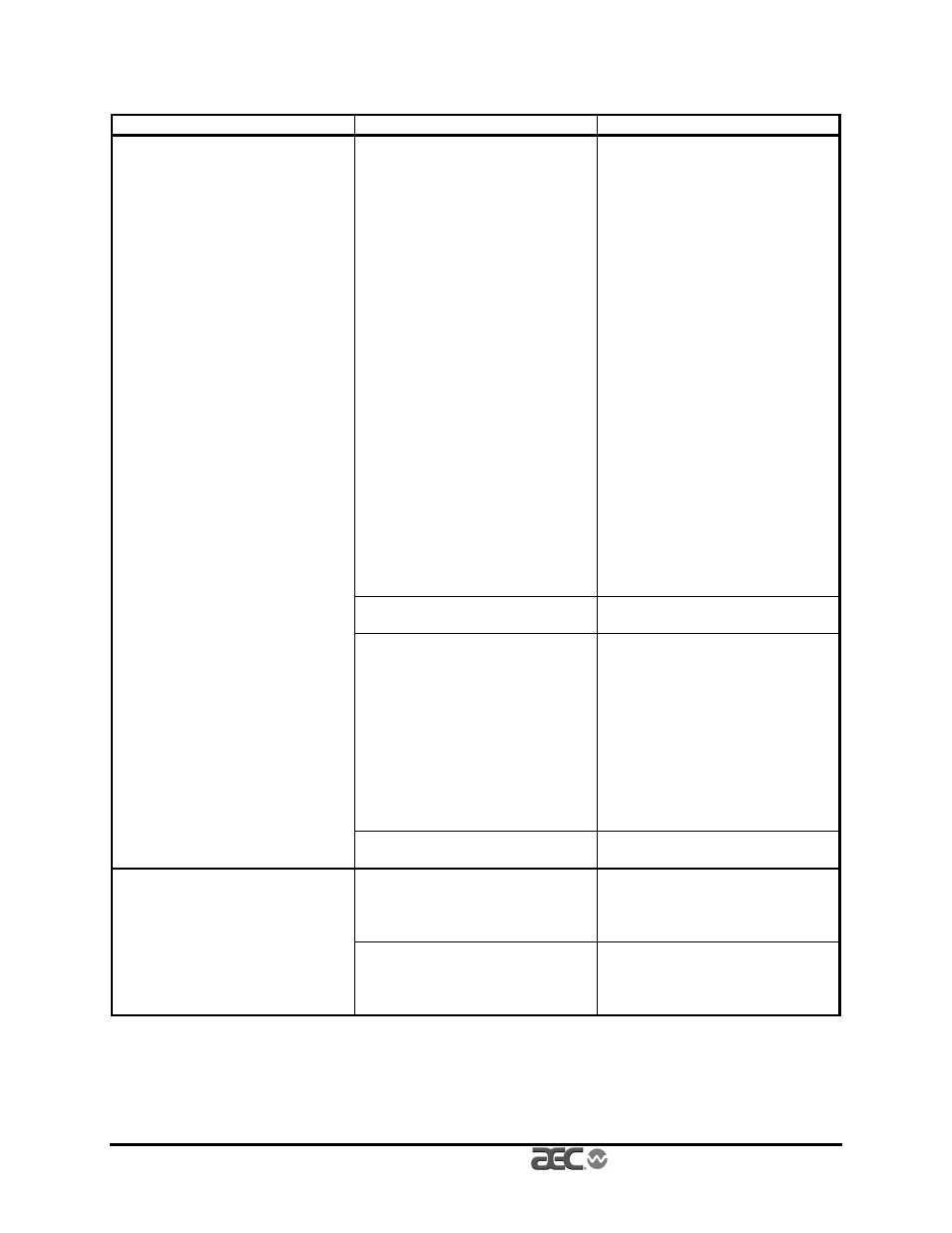AEC VacTrac Series Conveying Systems User Manual
Page 110

Page 110
VacTrac™ Series Conveying Systems
WH2-605A.4
Mechanical Components
Problem
Possible cause
Solution
Vacuum leak(s) in vacuum
hoppers.
• Replace or re-install worn or
misaligned gaskets.
• Hopper discharge flapper not
sealing under vacuum.
1) Replace worn or missing
gasket.
2) Clean fouled flapper.
3) Check counterweight for
proper operation. Repair or
adjust as needed.
• Internal check valves missing
or damaged. On single line Y
systems, internal check
valves must be installed in the
vacuum hoppers to seal all
hoppers not being conveyed
to. If the check valves are
present and undamaged, they
may be pushed too far onto
the tube stub to permit a
proper seal. Also, if the
hopper is over-filled, the
check valve may not seal
properly.
Vacuum leaks in material lines.
Check for leaks as described in
previous steps.
Material take-offs not properly
adjusted.
Too much air and not enough
material or too much material
and not enough air. Close
takeoff compartment material
inlet, slowly open until you hear
material surging and slugging.
Close material inlet until surging
disappears. On most systems, a
proper adjustment generates a
6” to 10” Hg (203 to 339
millibars) vacuum.
Vacuum conveying rate is
declining due to a vacuum loss
in the system.
(Cont’d.)
The blower is dead-headed.
Check the blower inlet for
obstruction.
Filters in the filter chamber are
dislodged, worn, or not seated
properly on the gasket.
Replace or repair immediately.
If the exhaust silencer has
material in it, replace it to
prevent fire hazard.
Material is sucked from the filter
chamber and through the
blower.
The material conveyed is not
what the system was designed
for. Very dusty materials have
different conveying needs.
Consult AEC, Inc. for advice on
hardware requirements.